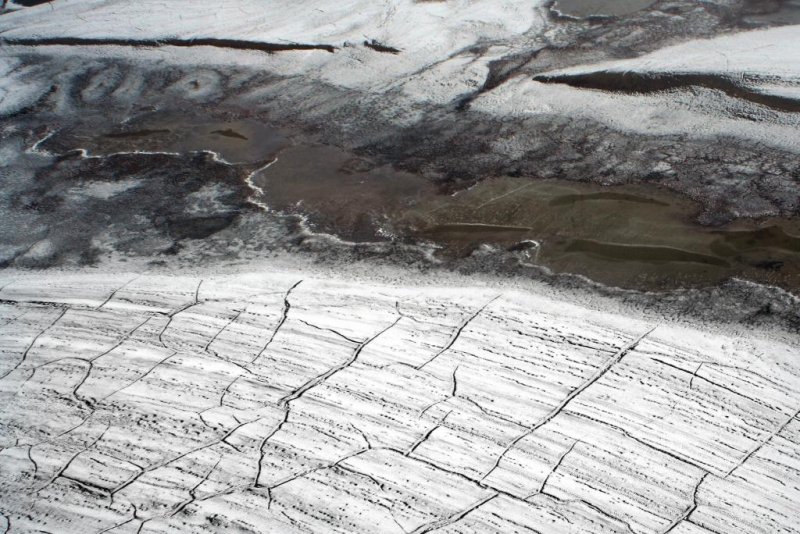Without Arctic sea ice, permafrost is more likely to melt. Photo by Brocken Inaglory/
Wikimedia Commons
Jan. 8 (UPI) -- As the Arctic loses its sea ice, new research suggests permafrost is more likely to thaw and release carbon dioxide into the atmosphere.
As its name implies, permafrost is ground that remains frozen for long periods of time, allowing it to store significant amounts of carbon indefinitely. When permafrost melts, carbon is able to escape into the atmosphere.
Because of its role in the carbon cycle, it's important for climate scientists to understand how permafrost is likely to respond to climate change, but predicting the fate of permafrost using modern observations alone is problematic.
To develop more accurate prediction models, scientists set out to study the long-term relationships between permafrost melting, temperature and sea ice stability.
"We were surprised to find that times when permafrost melted in the past did not simply match up with times when the Earth was at its warmest, but were much more likely when the Arctic was free of ice in the summer," Gideon Henderson, an earth scientist with the University of Oxford, said in a news release. "This discovery about the past behavior of permafrost suggests that the expected loss of Arctic sea ice in the future will accelerate melting of the permafrost presently found across much of Siberia."
As sea and air temperatures have risen as a result of global warming, sea ice in the Arctic has continued to disappear -- with several new records for sea ice maximum and minimum extents set over the last decade. Climate scientists expect the Arctic to be free of summertime sea ice in the near future.
Researchers were able to track permafrost melting in the past by studying Siberian cave formations. Stalagmites, stalactites and flowstones only form and grow when liquid water is available. These formations can't form or grow if the permafrost remains frozen.
Surveys conducted by Henderson and his colleagues showed stalagmites periodically grew from 1.5 million to 400,000 years ago, but the for the last 400,000 years, the stalagmites have remained unchanged. The pattern doesn't reflect global temperature fluctuations.
Instead, scientists found the periods of stalagmite growth with associated with records of sea ice-free summers in the Arctic. The findings were published Wednesday in the journal Nature.
It's not clear exactly why sea ice has such strong impact on permafrost stability, but researchers suspect a lack of sea ice allows warmer water and currents to exert a greater influence on the atmosphere, causing warm, wet air to travel farther inland across Siberia.
According to scientists, the influx of moisture triggered by a loss of sea ice likely boosted snow totals in Siberia, insulating the ground against the winter cold and making permafrost melting more likely.















